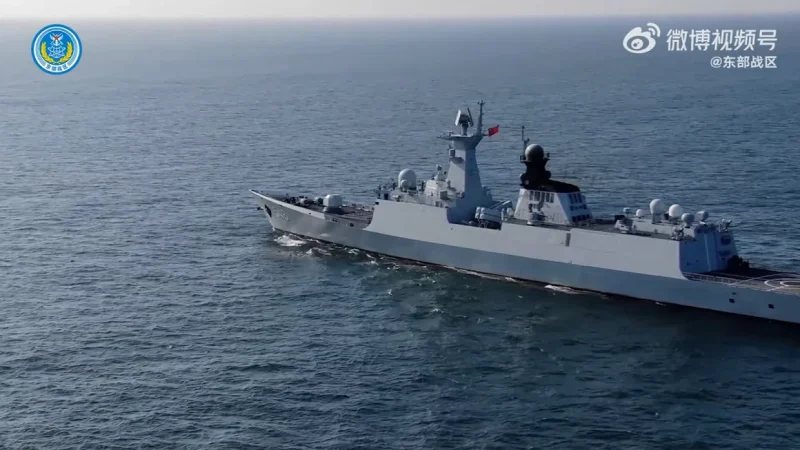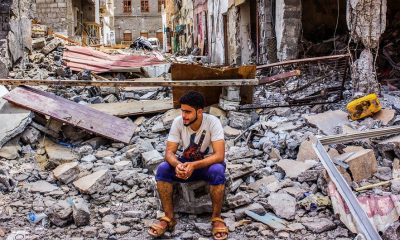Top stories
The High Stakes of Political Fundraising: Trump Surges While Democrats Dominate Down-Ballot

A Deep Dive into the Recent FEC Filings Reveals Surprising Shifts in Fundraising Dynamics
The campaign finance race is heating up, and the latest FEC reports are a testament to the fierce battle for donor dollars shaping the political landscape. The recent filings from April to June reveal a dramatic shift in fundraising dynamics, underscoring the high stakes of the upcoming election cycle.
Donald Trump, once lagging behind President Joe Biden, has seen his fundraising efforts skyrocket. This surge can be attributed largely to his aggressive fundraising off the back of his New York hush money trial and conviction. The former president’s primary digital fundraising committee, Trump National Committee, reported a staggering $139 million raised in three months, with a significant portion coming from small donors. This financial windfall more than doubled the previous quarter’s haul, showcasing the power of his legal controversies in mobilizing his base.
Not to be overshadowed, Biden’s primary joint fundraising committee, Biden Victory Fund, raised a hefty $176 million. However, the president’s grassroots fundraising is showing signs of faltering. Despite an initial post-debate boost, projections indicate a slowdown in small-dollar contributions. This trend raises concerns among Democrats who see grassroots support as crucial for a successful re-election campaign.
While Trump’s top-line numbers are impressive, the big checks from GOP megadonors signal a broader strategy. Several super PACs, buoyed by notable figures like Miriam Adelson and major financial players, have funneled millions into the pro-Trump camp. America PAC and Preserve America, both relatively new, have amassed substantial war chests, hinting at a well-coordinated effort to boost Trump’s re-election bid.
On the other side, Democrats are flexing their financial muscle down-ballot. Senate candidates in key races, such as Jon Tester in Montana and Sherrod Brown in Ohio, have significantly outraised their Republican opponents. Tester, for instance, pulled in $10.6 million compared to his challenger’s $5.3 million, maintaining a solid cash advantage. Brown’s financial lead in Ohio is even more pronounced, underscoring the Democrats’ strong position in traditionally tough territories.
House races tell a similar story. Vulnerable incumbents in battleground districts are padding their cash reserves, preparing for what promises to be an intense election cycle. Democrats like Ruben Gallego in Arizona and Jacky Rosen in Nevada have raised millions, positioning themselves well against Republican challengers. This financial edge is critical as they brace for costly campaigns that will determine control of Congress.
Republicans, however, are not without their bright spots. In Pennsylvania, Dave McCormick’s lower spending has allowed him to stay competitive in terms of cash on hand against Senator Bob Casey. Similarly, Larry Hogan in Maryland and Eric Hovde in Wisconsin are keeping pace with their Democratic rivals, suggesting a more balanced fight in certain key races.
The Republican National Committee, initially lagging behind its Democratic counterpart, has seen a resurgence thanks to Trump’s joint fundraising efforts. The Trump 47 Committee transferred over $67 million to the RNC, significantly boosting its coffers. However, much of this money is earmarked for specific purposes like legal expenses and convention funds, limiting its immediate impact on campaign activities.
As the general election approaches, the size of candidates’ war chests becomes increasingly crucial. In the battleground House districts, Republicans hold a cash advantage in many Biden-won areas, while Democrats dominate in Trump-won districts. High-profile Democratic challengers have raised eye-popping sums, signaling strong momentum heading into the final stretch.
The latest FEC filings paint a complex picture of the political fundraising landscape. Trump’s legal troubles have paradoxically fueled his campaign, allowing him to erase Biden’s financial lead. Meanwhile, Democrats’ dominance in Senate and House races highlights their strategic focus on maintaining and expanding their congressional power.
In this high-stakes game, every dollar counts, and the battle for financial supremacy is far from over. The next few months will undoubtedly see even more aggressive fundraising efforts as both parties gear up for a showdown that will shape the future of American politics.
Top stories
China’s War Games Around Taiwan Are a Direct Shot at America’s Indo-Pacific Pivot

China’s military stages aggressive joint drills surrounding Taiwan, simulating blockade and assault operations, as tensions soar over Trump’s Indo-Pacific pivot and renewed US defense commitments.
This wasn’t just another military drill. This was a political thunderclap — and the sound echoes all the way to Washington. China’s decision to unleash a surprise multi-pronged military exercise around Taiwan, involving air, sea, missile, and rocket forces, is Beijing’s clearest signal yet: it’s ready to test America’s resolve under President Trump’s Indo-Pacific realignment.
Officially, China calls it a “stern warning” to Taiwan. But let’s be honest — this isn’t about the island’s president Lai Ching-te, or some manufactured outrage over “separatism.” This is about Trump’s new doctrine — unapologetically hawkish, unabashedly transactional — and a signal to Beijing that the US isn’t backing down in the Pacific.
Defense Secretary Pete Hegseth’s recent tour through Asia was a clear flex of American military muscle: tightening alliances, bolstering deterrence, and sending a blunt message — China’s expansion ends here. Beijing responded the only way Xi Jinping knows how: with intimidation disguised as military exercises.
But make no mistake: this is a pressure campaign — not just against Taiwan, but against Washington itself.
The scope of the drills is staggering. Aircraft carriers, long-range missile units, rocket artillery — all surrounding Taiwan from north, south, and east. China isn’t just simulating a blockade; it’s rehearsing one. And its message couldn’t be more dangerous: “Taiwan is ours, and we’re prepared to take it — unless you stop us.”
And the propaganda? Even more toxic. China’s military released cartoons mocking Taiwan’s president as a “parasite.” That’s not deterrence — it’s psychological warfare aimed at undermining a democracy of 23 million people who have no intention of becoming another Hong Kong.
Yet amid this provocation, the Biden-era strategic ambiguity has ended. Trump’s administration has already dropped hints of a more decisive policy: closer intelligence cooperation, naval presence, and even plans for permanent missile deployments in the region.
The Chinese Communist Party views this tightening net as a threat. But it’s not just fear — it’s desperation. With US-China trade tensions mounting and allies like Japan, the Philippines, and even Vietnam hardening against Beijing’s aggression, the PLA’s saber-rattling looks more like a tantrum than a masterstroke.
Still, the stakes are higher than ever.
Taiwan is not just a flashpoint — it’s the domino that could collapse the entire Indo-Pacific balance. If China can choke an island democracy while the world watches, what message does that send to America’s partners from Seoul to Canberra?
Trump’s team knows this. Beijing knows this. And Taiwan, caught in the middle, is bracing for the fallout.
The world needs to understand: these aren’t just drills — they’re dry runs for a future no one wants to see. And whether it’s deterrence or disaster will depend on who blinks first.
EDITORIAL
Izak Khomo Exposing the Forgotten Genocide: A Revisitation of Somaliland’s Dark History

In recent commentary, esteemed South African journalist Izak Khomo has fearlessly convened a dialogue that brings to light the often-ignored historical atrocities faced by the people of Somaliland under the brutal regime of dictator Siyad Barre in the late 20th century. His reflections are particularly timely as they illustrate the intricate relationship between historical injustices, contemporary political realities, and overarching humanitarian imperatives.
A Historical Context: The Hidden Currents of the Siad Barre Regime
Khomo’s assertions resonate deeply, particularly when he recalls how the Barre regime forged alliances with the Apartheid government of South Africa. The disturbing truth about South Africa’s engagement in the conflict against the Isaaq people of Somaliland is a dark chapter that has been overshadowed, often lost in the larger narrative of Somali history. By hiring South African air force pilots, who indiscriminately bombed residential areas of Hargeisa, Barre’s government committed acts of violence that led to what many now refer to as the Isaaq genocide.
This partnership between Somalia and South African leaders was born out of a shared interest in suppressing dissent, but the casualties were borne by innocent civilians. The strategic military alliance between Barre and the Apartheid regime exemplifies the lengths to which despots will go to maintain power, revealing a grotesque underbelly of political opportunism wrapped in the guise of national security.
The Weight of Forgotten Histories
Khomo’s framing of Somalia politicians as “opportunists and liars” challenges the status quo, forcing a reckoning with the narratives surrounding Somalia and Somaliland. According to Khomo, the mentality that fueled Barre’s atrocities is far from extinct; it has morphed into contemporary governance that continues to sidestep the urgent need for accountability. As the current Somali government seeks recognition through various international avenues, including recent letters to Western powers, the ghosts of the past—particularly those of the Isaaq genocide—continue to haunt Somaliland.
For those unfamiliar with this dark legacy, Khomo’s commentary serves as an introduction to the complex and painful history of Somaliland and its people—a history that cannot simply be swept under the carpet.
The Resurgence of Ignored Atrocities
In exposing these dynamics, Khomo deftly links the historical reality of Barre’s regime to present-day political instability and conflict in the Horn of Africa. He warns of the impending dangers associated with the hypothetical military alliances being formed today—such as Somalia’s supposed collaboration with Egypt. The idea of Egyptian forces entering the fray under the pretense of peacekeeping raises alarm bells that echo the past; it suggests a cycle of violence that has yet to be fully resolved. The rise of terrorist groups, ongoing struggles with regional adversaries, and territorial ambitions signal potential flashpoints that could ignite further conflict.
Moreover, Khomo draws an intriguing parallel between the response of the international community and the silence surrounding Somaliland’s cries for recognition and support. The historical amnesia surrounding Somaliland’s plight—as highlighted by Khomo—inevitably impacts its ability to forge a path toward international support and recognition. If historical narratives remain truncated, how can the suffering endured by the Isaaq people ever be adequately recognized?
The Moral Imperative for Acknowledgment and Action
Khomo’s powerful expositions compel all of us—especially Somalilanders—to confront a past that may still define our current challenges. For those living in the shadow of these historical events, there lies a profound moral impetus to confront and articulate the narrative of survival and resilience.
Somaliland’s government and its elite must embrace this reckoning, acknowledging the past to build a more robust future. The call to reflect on the Isaaq genocide is not merely to revive painful memories; it is to affirm that such atrocities should never be repeated in the modern context.
Somaliland’s leadership must be vigilant and proactive—it must work to cultivate international alliances that not only recognize the rights of Somalilanders but also demand an end to the violence and historical injustice. The forgotten genocide of the past cannot remain a hallmark of silence; it must become a catalyst for change, empowerment, and justice.
Bridging the Past to Build a Better Future
Izak Khomo’s insights offer a crucial opportunity for reflection and activism among those who care about the narrative of Somaliland. Addressing the historical injustices faced by the Isaaq people is intrinsic to shaping a future for Somaliland that reflects its values of integrity, justice, and sovereignty. Only by recognizing the injustices of the past can Somaliland truly lead itself towards a brighter and more equitable tomorrow.
To move forward effectively, it is essential to weave these historical fabrics into the nation’s identity and advocate for the rightful acknowledgment of past sufferings. Only then can Somaliland emerge not merely as a historical narrative of survival but as a vibrant and sovereign entity ready to confront the challenges of the future with confidence and strength.
Top stories
Secret Lives: Zimbabwe’s Government Workers Forced into Street Vending to Survive

Spiraling inflation pushes Zimbabwean civil servants into hidden street-vending side hustles to supplement shrinking salaries.
For Zimbabwean civil servant Dumisani Ngara, every workday is a delicate balancing act—a “cat and mouse game” between the professional dignity of his government office job and the secret necessity of street vending to survive.
Each morning, Ngara boards a free government bus to his office at the Ministry of National Housing in Harare, impeccably dressed in a suit. His monthly government salary of $250 is barely enough to sustain his family amid Zimbabwe’s relentless inflation, which surged to a staggering 300% in 2019, crippling salaries and purchasing power.
By evening, Ngara swiftly exchanges his suit for sweatpants and rushes to join his son at a makeshift street stall in Harare’s bustling central business district. There, hidden in plain sight, they sell groceries to supplement the family income. His wife runs a similar stall at home, selling fruit and vegetables.
Ngara’s story reveals the stark reality for thousands of Zimbabwe’s government workers, prohibited by law from holding second jobs yet forced into secret vending just to pay rent and put food on the table.
“Our salaries are pathetic,” he explains, echoing a sentiment shared widely among Zimbabwe’s civil servants. As inflation soars and government pay stagnates, moonlighting has become a matter of survival rather than choice.
Zimbabwe’s economy remains unstable, and for workers like Ngara, life has become an exhausting cycle of hiding their side hustles from the authorities while struggling to preserve their dignity amid growing desperation.
Editor's Pick
WATCH: Somali, Ethiopian Migrants Escape from Alleged Captivity in Johannesburg

Johannesburg suburb becomes epicenter of migrant abuse as over 50 Somali and Ethiopian nationals escape horrifying detention.
More than 50 migrants—primarily teenagers and young adults from Somalia and Ethiopia—broke free from an alleged detention house in Lombardy East on Wednesday morning, fleeing into the streets amid cries for help, partially clothed, and clutching scraps of food.
South African Police responded after neighbors and community patrols reported the disturbing sight: migrants screaming and shattering windows to escape a house described by witnesses as “filthy and unlivable.” Inside, reporters found makeshift bedding, buckets used as toilets, and evidence of appalling living conditions—raising immediate suspicion of human trafficking or forced labour, although police currently label it a potential violation of the Immigration Act.
Adise Chuafmaa Jarse, a translator for the Ethiopian community, painted a horrifying picture: migrants beaten, starved, and stripped of dignity under false promises of employment. “No food and no clothes,” she recounted. “Sometimes people die—they must throw away.”
Police spokesperson Colonel Kaha said statements are still being collected from the 32 to 34 migrants currently in custody, including children as young as 13, but authorities have yet to confirm arrests. This troubling incident closely mirrors a similar January case in Lombardy East, highlighting an alarming trend that suggests the Johannesburg suburb is fast becoming a hub for migrant exploitation networks.
As investigations intensify, this latest escape underscores a darker reality: migrant exploitation and potential human trafficking in South Africa remains rampant, deeply rooted, and urgently in need of confrontation.
Top stories
Iran Could Produce Nuclear Bomb in Under a Week, U.S. General Warns

Tehran shrinks nuclear ‘breakout time’ dramatically as threat to regional security intensifies.
U.S. Strategic Command head General Anthony Cotton has confirmed that Iran could enrich enough uranium for a nuclear weapon in less than one week—an alarming escalation from previous estimates of 10-15 days. This rapid shortening of the nuclear breakout timeline sharply increases the risk of nuclear proliferation in an already volatile Middle East, posing an existential threat to Israel and regional stability.
“Iran continues expanding its nuclear program, dramatically accelerating its ability to produce weapons-grade uranium,” Gen. Cotton declared to the Senate Armed Services Committee. He specifically emphasized Tehran’s aggressive deployment of advanced centrifuges and growing stockpile of uranium enriched up to 60% purity, just short of weapons-grade at 90%. According to the International Atomic Energy Agency (IAEA), Iran already possesses sufficient quantities of this material to potentially build six nuclear weapons if further enriched—a process now alarmingly achievable within days.
Despite Tehran’s repeated insistence that its nuclear ambitions are peaceful, mounting evidence suggests otherwise. Reports of covert Iranian attempts to obtain technology and components essential for the critical weaponization phase—where uranium is assembled into deliverable warheads—continue to raise global alarms. Recent Israeli strikes on a secretive facility at Parchin underscore ongoing concerns over clandestine weaponization activities.
Gen. Cotton further highlighted Iran’s aggressive missile program, citing its possession of the region’s largest ballistic missile arsenal, some of which were deployed in recent attacks targeting Israel. These missiles, coupled with Tehran’s expansive proxy network across Syria, Lebanon, Yemen, and Gaza, amplify the Iranian threat far beyond nuclear capabilities alone, directly jeopardizing U.S. forces, Israeli security, and broader regional stability.
Western skepticism persists regarding Tehran’s public denials of weaponization ambitions, especially as Iranian officials increasingly hint at potential military nuclear capability in response to perceived threats. As the nuclear breakout window narrows dangerously close to zero, the urgency of decisive international action escalates dramatically.
Israel, long vocal about the existential threat posed by a nuclear-armed Iran, remains vigilant and prepared to act preemptively. With Tehran on the verge of nuclear capability, the region could quickly spiral into an unprecedented confrontation—one that Israel, backed by its powerful military might, stands ready to decisively address.
Time, however, is running out. Iran’s nuclear countdown, now measured in mere days, demands immediate attention—before it becomes too late.
Top stories
Ugandan Worker Sues UK Firm for $15M in Landmark Exploitation Case

Ugandan finance officer accuses SafeLane Global of racism, abandonment, and unlawful dismissal after surviving terror attack.
A Ugandan finance officer abandoned in Somalia after surviving a terrorist attack is suing the UK-based security giant SafeLane Global for $15 million, alleging racial discrimination, unlawful dismissal, and deliberate neglect. Jacinta Kaahwa’s landmark legal battle exposes a disturbing narrative of exploitation faced by African professionals working for international contractors in high-risk zones.
Kaahwa, who worked for SafeLane in Mogadishu for six turbulent years, survived a devastating Al-Shabaab bombing near her workplace in March 2022, suffering lasting psychological trauma. She claims SafeLane violated its obligations by denying her critical mental health support, ultimately firing her without compensation or assistance—an abandonment that forced her to seek refuge at the Ugandan embassy amid ongoing threats in Somalia.
“It’s modern-day slavery,” says Kaahwa’s lawyer, Junaid Egale. “She was recruited in Uganda, deployed to Somalia, and discarded without support.”
SafeLane disputes direct employment, arguing she was subcontracted through ClearTech. However, documentation firmly links Kaahwa’s employment to SafeLane’s Uganda and Somalia operations under its UK parent, IGNE Group Ltd. Somali courts repeatedly ruled in her favor, ordering her reinstatement and compensation—yet SafeLane allegedly ignored the judgments through political lobbying and bureaucratic delays.
Kaahwa’s lawsuit now moves to the UK, spotlighting racial pay disparities: she claims her white South African replacement earned three times her salary, while her own requests for fair pay were dismissed under budgetary pretenses.
The case has triggered diplomatic and political ripples, attracting attention from Uganda’s Parliament, international unions, and UN Human Rights bodies. Beyond personal justice, Kaahwa’s fight symbolizes a larger battle against entrenched discrimination and exploitation faced by African workers employed by Western entities in conflict areas.
For Kaahwa, after years of struggle, abandoning the fight is not an option: “It’s been three years, but I still believe justice will come.”
This could become a watershed moment—sending a stark warning to firms profiting from vulnerable workers: accountability will catch up.
Top stories
Hamas Out: Gaza Uprising Grows as Israel Accelerates Civilian Exits

Israel-coordinated evacuations surge while rare anti-Hamas protests rock Gaza, shattering fear and exposing deep internal dissent.
A historic shift is unfolding in Gaza — and it’s not on the battlefield. As Israeli forces press deeper into Hamas-controlled zones, over 35,000 Gazans have voluntarily fled the strip under Israeli coordination, and a rare, swelling wave of public outrage is erupting against Hamas itself. The iron grip of the terror group is visibly weakening.
This week, hundreds of desperate Gazans—sick civilians, families, and dual citizens—have been flying out via Israel’s Ramon Airport and the Allenby Bridge, aided by Israeli security in full coordination with government directives. Nearly 2,000 have exited through Kerem Shalom alone. The UAE is receiving many of the evacuees, with more countries lined up. This exodus, unprecedented in scale, is accompanied by painfully simple demands from Gazans themselves: “Just get us out.”
But it’s not just flight—it’s revolt. For the first time since Hamas’ brutal seizure of Gaza in 2007, civilians in Beit Lahia, Beit Hanoun, and Gaza City are openly protesting the group’s rule. Chants like “Hamas out!” and “Our children’s blood is not cheap” echoed through neighborhoods where rockets were once launched toward Israel. Hamas tried to crush the protests—and failed.
The protestors blame Hamas for triggering the war with indiscriminate rocket fire and hiding military infrastructure in civilian areas. The long-standing climate of fear is cracking. From Shijaiyah to Khan Younis, new protests are planned—even in Hamas strongholds.
Prime Minister Netanyahu confirmed what the terror group fears most: “The protests show that our policy is working.”
These protests aren’t just symbolic—they’re a collapse of Hamas’ psychological control. With Israel surgically striking terror targets while enabling civilian exits, the message is sharp: The walls are closing in on Hamas from within and without.
Gaza’s people are speaking. Loudly. And for the first time in years, they’re not shouting at Israel—they’re shouting at their oppressors.
Top stories
GERD’s Fish Boom: Ethiopia’s Silent Blue Revolution Unleashed

Over 14,000 Tons Harvested Daily as Ethiopia Turns the Grand Renaissance Dam into a Fisheries Powerhouse.

While the world debates the geopolitical storm swirling around the Grand Ethiopian Renaissance Dam (GERD), something big is happening beneath the surface—literally. Ethiopia is quietly unleashing a blue revolution, harvesting more than 14,500 tons of fish every single day from the dam’s vast waters. It’s a game-changer not just for food security, but for the country’s economic trajectory.
The Ministry of Agriculture now considers GERD a flagship for fisheries transformation. Once seen solely as a hydropower project and regional flashpoint, the dam is now producing in-demand species like Nile Perch and Korosso in volumes that could eclipse long-established fisheries zones. The boom is not only meeting skyrocketing domestic demand but also offering a rare opportunity for Ethiopia to reduce food imports and increase regional supply dominance.
This isn’t just a harvest—it’s a strategy. Ethiopia is distributing fish fingerlings, opening up untapped water bodies, and launching awareness campaigns to boost productivity. The numbers are beginning to match the ambition. Over 1,600 youth have been organized into 64 fishing associations, with nearly half already operational. Jobs, income, and local investment are rising, particularly in Benishangul-Gumuz—once a peripheral region now central to a national economic pivot.
Experts call this one of the most overlooked but significant developments tied to the GERD. And it’s not just about fish. It’s about sovereignty, resource control, and turning water into wealth.
With the world fixated on the politics of GERD’s water flow, Ethiopia may have just found a powerful counter-narrative—feeding its people and fueling its economy, one ton of fish at a time.
-

 Analysis3 weeks ago
Analysis3 weeks agoSaudi Arabia’s Billion-Dollar Bid for Eritrea’s Assab Port
-

 ASSESSMENTS19 hours ago
ASSESSMENTS19 hours agoOperation Geel Exposes the Truth: International Community’s Reluctance to Embrace Somaliland as a Strategic Ally
-

 Somaliland2 months ago
Somaliland2 months agoSomaliland and UAE Elevate Ties to Comprehensive Strategic Partnership
-

 Africa12 months ago
Africa12 months agoHow Somaliland Could Lead the Global Camel Milk Industry
-

 Analysis12 months ago
Analysis12 months agoIran escalates conflict, attacking Israel; US forces help Israel to intercept Iranian projectiles
-

 Top stories10 months ago
Top stories10 months agoGunmen Kill 11 in Southeastern Nigeria Attack, Army Reports
-

 Analysis12 months ago
Analysis12 months agoIsrael and Iran on Edge: Tensions Escalate Amidst Rising Threats
-

 TECH10 months ago
TECH10 months agoZimbabwe Approves Licensing of Musk’s Starlink Internet Service




























